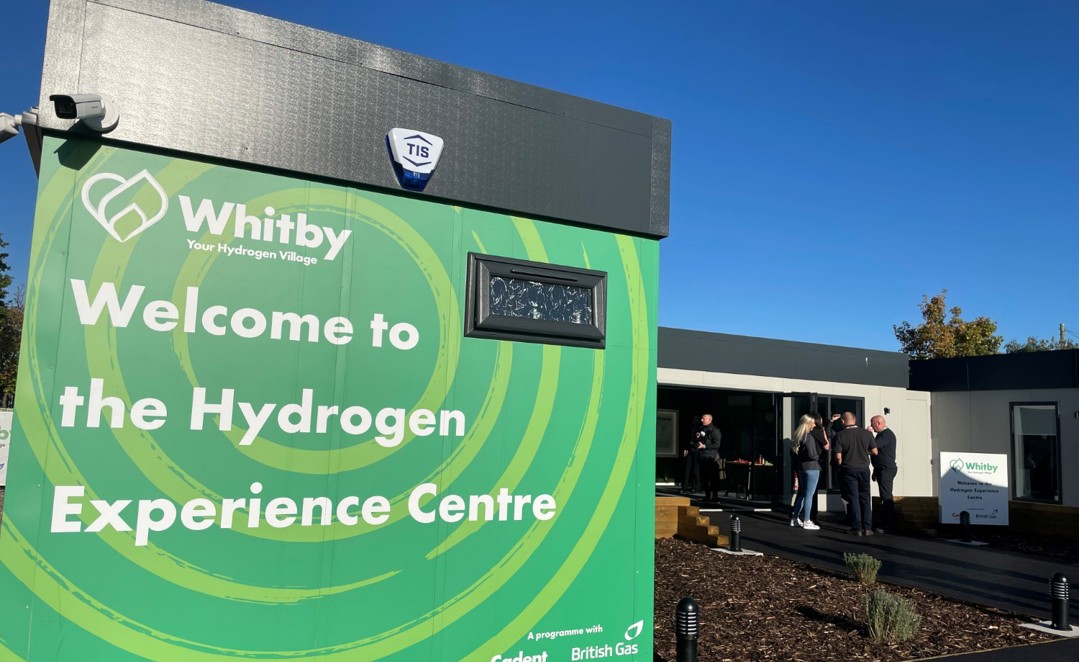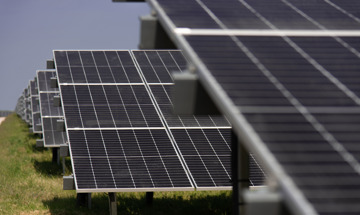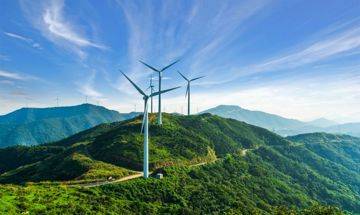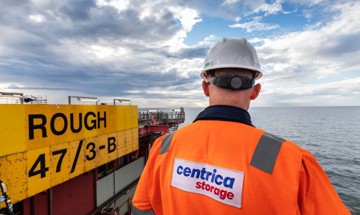Hydrogen. The fuel of the future. The key to the transition to cleaner fuels. The answer to net zero.
The hydrogen revolution has begun - and we’re playing our part to power it up.

The hydrogen revolution: why now?
The UK faces huge challenges. From building energy security and reaching net zero to creating the jobs of today and tomorrow.
Against this backdrop, and during such unstable times, finding low carbon ways of replacing fossil fuels, which still play a critical role in balancing the system, is essential.
A UK hydrogen economy would bolster energy security, create thousands of jobs, and help us reach net zero - saving the same emissions by 2032 as the carbon captured by 700 million trees.
As part of its Power Up Britain strategy, the government has set out its plan to deliver a world-leading hydrogen economy, with an ambition of generating enough clean electricity to power London for a whole year by 2030.
At Centrica, we’re doing everything we can to help make this happen, and drive the hydrogen revolution forward.
Here’s why we’re rolling up our sleeves and getting stuck into the UK’s great hydrogen shift.
Hydrogen is the future
What are the benefits of a world-leading hydrogen economy?
Currently, around 40% of the UK’s power comes from natural gas. A way to make this process fit for a Net Zero future is by replacing carbon emitting fossil fuels with hydrogen. In a UK first, we’re testing this out with green-tech company HiiRoc.
The 49MW gas fired plant at Brigg meets demand during peak times, or when generation from renewables is low. Our twelve month trial will see us inject hydrogen into this plant alongside methane natural gas - driving down the overall carbon intensity.
We’ll start by injecting 3% hydrogen. After the trial, we’ll push it to 20%. But the vision is that all gas-fired peaking plants in the UK run on 100% hydrogen. A huge step towards transforming the country’s energy system.
Driving net zero
20-35% of UK energy consumption could be hydrogen-based by 2050. This could help slash emissions by an incredible 78% by 2035 — the government’s ambition.
We want to help make this happen.
Together with Ryze Hydrogen, we’re building and operating hydrogen production facilities. Providing a reliable supply of hydrogen to industry and transport.
But how will hydrogen storage and production get us to net zero?
Crucially, it will give the energy system enough flexibility to use more weather-based renewables. Delivering long term resilience. Moving the UK away from fossil fuels.
Delivering green jobs for the UK
Transforming old gas terminals into the hydrogen hubs of the future is an excellent way to safeguard jobs.
Take Rough. The facility first opened in 1967, and is home to generations of workers.
We’ve recently reopened this facility, and we’re on a mission to turn it into the world’s biggest hydrogen storage facility.
But it’s not just about protecting jobs - it’s about creating thousands of new ones. The repurposing of Rough is set to deliver over 2,000 jobs across the Humber region.


The biggest challenge
A hydrogen economy offers countless benefits. But it doesn't come without its challenges.
Hydrogen has to be manufactured, and depending on the type, these processes can release carbon that must be captured and stored. This means more labour, more cost, more inconvenience.
Green hydrogen, made through electrolysis, is the most environmentally sound but most energy intensive — using electricity to split water into hydrogen and oxygen. Crucially, green hydrogen, emits zero carbon and the electricity used to make it can come entirely from surplus renewable energy, keeping the entire process clean.
Other types of hydrogen such as blue and emerald while not without their merits, are made by converting biomethane, flare gas or natural gas into clean hydrogen which means that both produce carbon that must be captured and stored if we want to get to net zero.
Powering the revolution
We’ve been busy powering up the hydrogen revolution. And we’ll keep using our decades worth of experience to tackle current challenges head on. Here are some of our big milestones:
Reopening Rough in East Yorkshire
Rough could store enough hydrogen to meet 50% of the UK’s energy storage requirements.
Building a hydrogen village in Whitby
Imagine a whole village powered by hydrogen.
Well, that could become a reality.
We're a partner in Cadent's Whitby project in Ellesmere Port which hopes to see locals use 100% hydrogen for hot water and heating.
It could serve as a blueprint for the whole of the UK — showing one way we can help decarbonise heating and cooking in the home.

Futureproofing an old fossil fuel asset in North Yorkshire
From a former gas fired power plant, to the green energy hub of the future.
We’ll develop a 28MW battery on site, powering around 14,000 homes for two hours, as well as explore how the site can be used for off-grid hydrogen production.
The UK can become the world-leading exporter of hydrogen. And Centrica is already working to make this happen. We’ll keep researching, innovating and investing — so the hydrogen revolution stays charged up.
Powering up the hydrogen revolution

20-35%
of UK energy consumption could be hydrogen-based by 2050
2,000
The repurposing of Rough is set to deliver over 2,000 jobs across the Humber region
50%
Rough could store enough hydrogen to meet 50% of the UK’s energy storage requirements.
14,000
We’ll develop a 28MW battery on site, powering around 14,000 homes for two hours

Case Study
Secure, Sustainable and Affordable: 2025 Policy Positions
Sustainability

Blog
Chris O'Shea - we must create a skills system that will produce the workers the UK needs to build our low carbon future
Sustainability

Case Study
The Demand for Energy Flexibility
Sustainability

Blog
Let’s grasp the opportunity a secure, Net Zero energy future affords
Sustainability

Blog
"It’s our role to take everyone on the journey towards Net Zero living"
Sustainability
Progressing our People and Planet Plan
Sustainability



